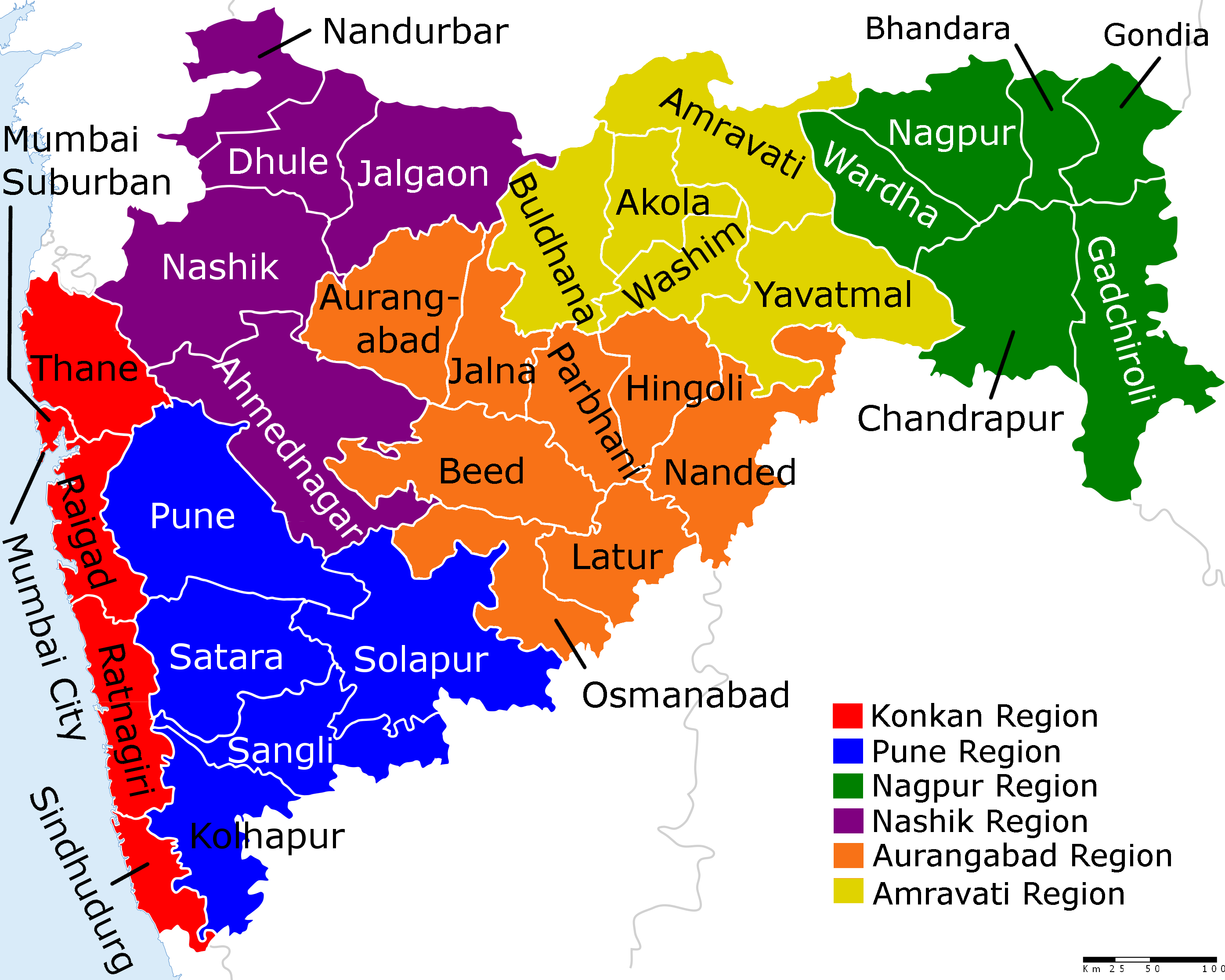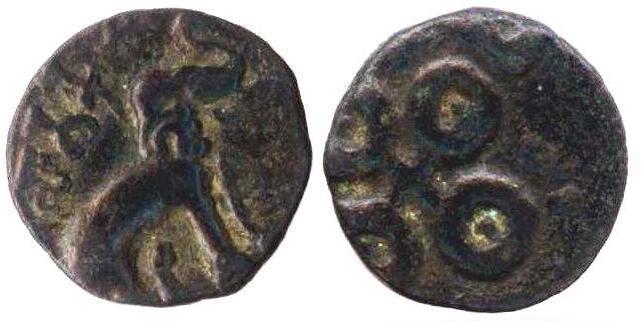|
Hadsar
Hadsar fort is among the many forts in Junnar region of Pune district which were meant for protection of the ancient commercial trade route from Mawal region to Kalyan via Naneghat. There is a marvelous sculpture design of the bastion and the fort entrance, which is not seen elsewhere. They are all carved from a single rock. History It is believed that this fort was built in the Satavahana Era. This fort was mentioned in the Treaty of Purandar between King Shivaji and Moghuls. This fort was captured by British in 1818. Places to see The uniqueness of this fort is in the construction of the entrance gate. The entrance gate, rooms for sentries, water cisterns, steps to the fort are all chiselled from single rock. There is temple of Mahdev at the top of the fort. There are stone cut idols of Ganesh, Garud and Hanuman in the temple. There is a big lake on the fort. How to reach The Hadsar fort is near the Village Hadsar. Hadsar village is located 13 km North-West of Junnar. ... [...More Info...] [...Related Items...] OR: [Wikipedia] [Google] [Baidu] |
Junnar
Junnar (Marathi pronunciation: ͡ʒunːəɾ is a city in the Pune district of the Indian state of Maharashtra. The city has history dating back to the first millennium. The nearby fort of Shivneri was the birthplace of Maratha king Chatrapati Shivaji Maharaj, the founder of the Maratha Empire. Junnar was declared the first tourism taluka in Pune district by the government of Maharashtra on 9 January 2018. History Junnar has been an important trading and political centre for the last two millennia. The town is on the trade route that links the ports of western India or more specifically of Konkan with Deccan interiors. The first mention of Junnar comes the Greco-Roman travellers from the first millennium, The Indo-Scythian Western Satraps ruled at Junnar during the 2nd century CE as shown by their cave inscriptions in the area of Junnar, at Manmodi Caves. "Yavana" Greeks also left donative inscriptions in the 2nd century CE at Lenyadri and Manmodi Caves. According to Da ... [...More Info...] [...Related Items...] OR: [Wikipedia] [Google] [Baidu] |
Pune District
Pune district (Marathi pronunciation: uɳeː is the most populous district in the Indian state of Maharashtra. The district's population was 9,429,408 in the 2011 census, making it the fourth most populous district amongst India's 640 districts. This district has an urban population of 58.08 percent of its total. It is one of the most industrialized districts in India. In recent decades it has also become a hub for information technology. Officer Members of Parliament * Girish Bapat ( BJP) - * Supriya Sule ( NCP) - * Dr. Amol Kolhe ( NCP) - * Shrirang Barne (BSS) - Guardian Minister list of Guardian Minister District Magistrate/Collector list of District Magistrate / Collector District Justice District Police Commissioner list of District Police Commissioner President & Vice-President Zilla Parishad *President list of President Zilla Parishad Pune *Vice-President list of Vice-President Zilla Parishad Pune Chief Executive Off ... [...More Info...] [...Related Items...] OR: [Wikipedia] [Google] [Baidu] |
List Of Forts In Maharashtra
This is list of forts in Maharashtra a state of India # Achala Fort (Nashik) # Agashi Fort # Ahmednagar Fort # Ahivant Fort # Ajinkyatara # Akola Fort # Akluj Fort # Alang Fort # Ambolgad Ambolgad is a village near Jaitapur Nuclear Power Project in the Ratnagiri district in Maharashtra, India. A Defence Officers Group named DARIYA (दरिया) has been formed by Col Dhanajirao Patil for bringing this village on World Map.{ ... # Anjaneri # Anjanvel Fort # Ankai Fort # Antur Fort # Arnala fort # Asheri fort # Asava fort # Avchitgad # Aurangabad Fort # Avandha Fort # Balapur Fort # Ballarpur Fort # Bankot fort # Bahadur Fort # Belapur Fort # Birwadi fort # Bitangad # Bhagwantgad # Bhairavgad # Bhamer Dhule # Bharatgad # Bhaskargad/Basgad # Bhavangad Fort/Bhondgad # Bhorgiri fort # Bhudargad Fort # Bhupatgad Fort # Bhushangad # Bombay Castle # Castella de Aguada/Bandra Fort # Chanda Fort # Chandan Fort # Chandragad/Dhavalgad # Chandwad fort # Chauler Fort/Chaurgad ... [...More Info...] [...Related Items...] OR: [Wikipedia] [Google] [Baidu] |
Maharashtra
Maharashtra (; , abbr. MH or Maha) is a state in the western peninsular region of India occupying a substantial portion of the Deccan Plateau. Maharashtra is the second-most populous state in India and the second-most populous country subdivision globally. It was formed on 1 May 1960 by splitting the bilingual Bombay State, which had existed since 1956, into majority Marathi-speaking Maharashtra and Gujarati-speaking Gujarat. Maharashtra is home to the Marathi people, the predominant ethno-linguistic group, who speak the Marathi language, the official language of the state. The state is divided into 6 divisions and 36 districts, with the state capital being Mumbai, the most populous urban area in India, and Nagpur serving as the winter capital, which also hosts the winter session of the state legislature. Godavari and Krishna are the two major rivers in the state. Forests cover 16.47 per cent of the state's geographical area. Out of the total cultivable land in the s ... [...More Info...] [...Related Items...] OR: [Wikipedia] [Google] [Baidu] |
Naneghat
Naneghat, also referred to as Nanaghat or Nana Ghat ( IAST: Nānāghaṭ), is a mountain pass in the Western Ghats range between the Konkan coast and the ancient town of Junnar in the Deccan plateau. The pass is about north of Pune and about east from Mumbai, Maharashtra, India. It was a part of an ancient trading route, and is famous for a major cave with Prakrut Language inscriptions in Dhammalipi and Middle Indo-Aryan dialect. These inscriptions have been dated between the 2nd and the 1st century BCE, and attributed to the Satavahana dynasty era.Development Of Modern Numerals And Numeral Systems: The Hindu-Arabic system Encyclopaedia Britannica, Quote: "The 1, 4, and 6 are found in the Ashoka inscriptions (3rd century bce); the 2, 4, 6, 7, and 9 appear in the N ... [...More Info...] [...Related Items...] OR: [Wikipedia] [Google] [Baidu] |
Fort
A fortification is a military construction or building designed for the defense of territories in warfare, and is also used to establish rule in a region during peacetime. The term is derived from Latin ''fortis'' ("strong") and ''facere'' ("to make"). From very early history to modern times, defensive walls have often been necessary for cities to survive in an ever-changing world of invasion and conquest. Some settlements in the Indus Valley civilization were the first small cities to be fortified. In ancient Greece, large stone walls had been built in Mycenaean Greece, such as the ancient site of Mycenae (famous for the huge stone blocks of its ' cyclopean' walls). A Greek '' phrourion'' was a fortified collection of buildings used as a military garrison, and is the equivalent of the Roman castellum or English fortress. These constructions mainly served the purpose of a watch tower, to guard certain roads, passes, and borders. Though smaller than a real fortress, the ... [...More Info...] [...Related Items...] OR: [Wikipedia] [Google] [Baidu] |
Satavahana
The Satavahanas (''Sādavāhana'' or ''Sātavāhana'', IAST: ), also referred to as the Andhras in the Puranas, were an ancient Indian dynasty based in the Deccan region. Most modern scholars believe that the Satavahana rule began in the late second century BCE and lasted until the early third century CE, although some assign the beginning of their rule to as early as the 3rd century BCE based on the Puranas, but uncorroborated by archaeological evidence. The Satavahana kingdom mainly comprised the present-day Andhra Pradesh, Telangana, and Maharashtra. At different times, their rule extended to parts of modern Gujarat, Madhya Pradesh, and Karnataka. The dynasty had different capital cities at different times, including Pratishthana (Paithan) and Amaravati ( Dharanikota). The origin of the dynasty is uncertain, but according to the Puranas, their first king overthrew the Kanva dynasty. In the post- Maurya era, the Satavahanas established peace in the Deccan region and re ... [...More Info...] [...Related Items...] OR: [Wikipedia] [Google] [Baidu] |
Treaty Of Purandar (1665)
The Treaty of Purandar was signed on 11 June 1665, between Jai Singh I, commander of the Mughal Empire, and Shivaji. Shivaji was forced to sign the agreement after Jai Singh besieged Purandar fort. When Shivaji realised that war with the Mughal Empire would only cause damage to his empire with possibility of his men suffering heavy losses, he chose to enter the treaty instead of leaving his men under the Mughals. Background Shivaji attacked six Mughal generals at Lal Mahal of Poona (Now Pune). Then Shivaji sacked Surat, a prosperous port city back then which inhabited lots of rich merchants from all parts of India, China, Turkey, England and the Netherlands. Shivaji got huge amount of wealth in this loot. After that in 1665 Aurangzeb sent his general Mirza Raja Jai Singh to subdue Shivaji and the Adil Shahi dynasty. Siege of Purandar Jai Singh besieged Purandar fort in 1665. He won the neighbouring Vajragad fort in the middle of April. He surrounded Purandar and attacke ... [...More Info...] [...Related Items...] OR: [Wikipedia] [Google] [Baidu] |
Shivaji
Shivaji Bhonsale I (; 19 February 1630 – 3 April 1680), also referred to as Chhatrapati Shivaji Maharaj, was an Indian ruler and a member of the Bhonsle Maratha clan. Shivaji carved out his own independent kingdom from the declining Adilshahi sultanate of Bijapur which formed the genesis of the Maratha Empire. In 1674, he was formally crowned the '' Chhatrapati'' of his realm at Raigad Fort. Over the course of his life, Shivaji engaged in both alliances and hostilities with the Mughal Empire, the Sultanate of Golkonda, Sultanate of Bijapur and the European colonial powers. Shivaji's military forces expanded the Maratha sphere of influence, capturing and building forts, and forming a Maratha navy. Shivaji established a competent and progressive civil rule with well-structured administrative organisations. He revived ancient Hindu political traditions, court conventions and promoted the usage of the Marathi and Sanskrit languages, replacing Persian in court and admi ... [...More Info...] [...Related Items...] OR: [Wikipedia] [Google] [Baidu] |
Mughal Empire
The Mughal Empire was an early-modern empire that controlled much of South Asia between the 16th and 19th centuries. Quote: "Although the first two Timurid emperors and many of their noblemen were recent migrants to the subcontinent, the dynasty and the empire itself became indisputably Indian. The interests and futures of all concerned were in India, not in ancestral homelands in the Middle East or Central Asia. Furthermore, the Mughal empire emerged from the Indian historical experience. It was the end product of a millennium of Muslim conquest, colonization, and state-building in the Indian subcontinent." For some two hundred years, the empire stretched from the outer fringes of the Indus river basin in the west, northern Afghanistan in the northwest, and Kashmir in the north, to the highlands of present-day Assam and Bangladesh in the east, and the uplands of the Deccan Plateau in South India. Quote: "The realm so defined and governed was a vast territory of some , ra ... [...More Info...] [...Related Items...] OR: [Wikipedia] [Google] [Baidu] |





